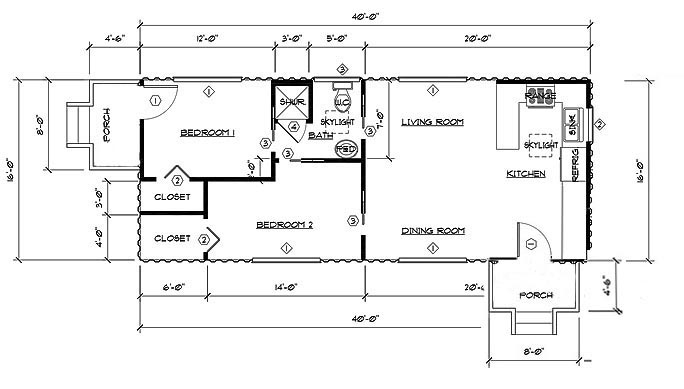I've briefly covered the use of shipping containers as houses, but I wanted to go into them in a little bit more depth. About 80% of the world's containers are either 6.1m, twenty foot or 12.2m, forty foot standard length boxes of the dry freight design. These typical containers are rectangular, closed box models, with doors fitted at one end, and made of corrugated weathering steel (commonly known as CorTen).
Weathering steel refers to the chemical composition of these steels, allowing the steel to rust in order to form the protective coating.

The containers are typically lined with a plywood floor, but bare walled and ceilinged. Corrugating the sheet metal used for the sides and roof contributes significantly to the container's rigidity and stacking strength, just like in corrugated iron or in cardboard boxes.

Standard containers are 2.44 m (8') wide by 2.59 m 8'6" high, although the taller "High Cube" or "hi-cube" units measuring 2.90 m (9'6") have become very common in recent years.
By the end of 2013, high-cube 40 ft containers represented almost 50% of the world's maritime container fleet, according to Drewry's Container Census report.

ISO containers have castings with openings for twistlock fasteners at each of the eight corners, to allow gripping the box from above, below, or the side, and they can be stacked up to ten units high. Regional intermodal containers, such as European and U.S. domestic units however, are mainly transported by road and rail, and can frequently only be stacked up to three laden units high. Although the two ends are quite rigid, containers flex somewhat during transport.
Their standardised design, high strength and durability materials, makes the use of shipping containers for domestic repurposing quite appealing. They can be stacked, staggered and arranged. The corrugated steel can be welded, cut and shaped, and the heavy beams at each corner and the solid base give you the ability to completely cut away the sides to give a open-plan effect.

The rest of the stats of the containers give you an idea of their workability, as far as architectural use goes: A 40' container weighs 3,800 kg and has a capacity of 67.5 m³, and are typically rated to have a net load of 26,200 kg. That's a lot of capacity. The internal dimensions are 12.03m x 2.35m x 2.38m, and externally 12.2m x 2.44m x 2.59m.

Converting them into homes isn't anything new, and there are loads of resources to review plans and different configurations are widely available.
There is also some good advice about what NOT to do with your shipping container, namely burying them, because they are not designed to take loads on the sides or middles of the panels, rather than on their stacking corner posts.
There are also the issues with the containers "floating" if buried, let alone at sea, if they fall off the back of a ship, which apparently happens more often than anyone wants, but other than that, they are very versatile, and readily available, rapidly pre-fabricated units.
They are, however, not designed to be bulletproof, and the folks from Civil Advantage put them to the test in the following video.
However, if you really need that kind of thing going on, there are of course, options. However, all told, it looks like they are robust, resilient and readily available home construction alternative. I think I would really like to do this at some stage, at least a two storied construction, and in my minds eye, a horse-shoe style two-story building, which can be buttoned up securely at the ground level.
What do you think?




